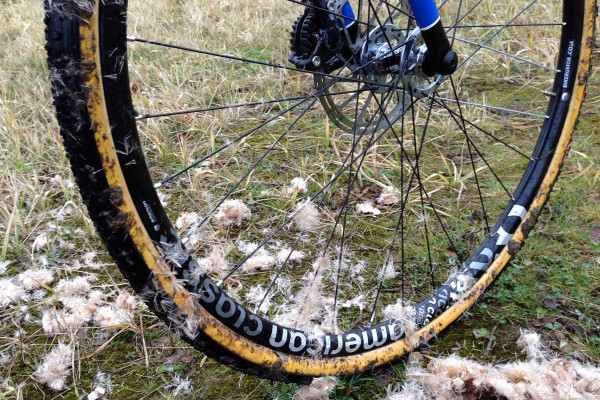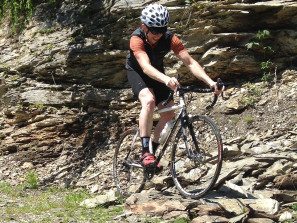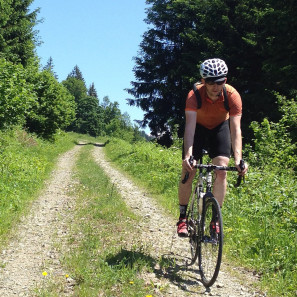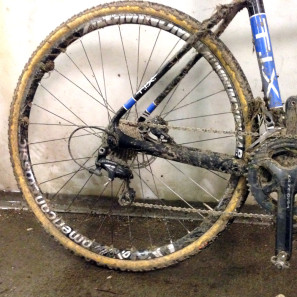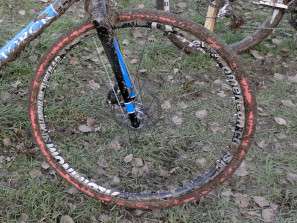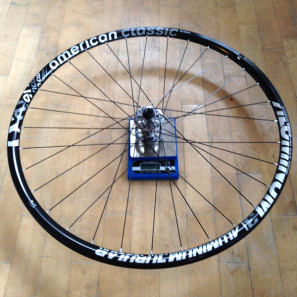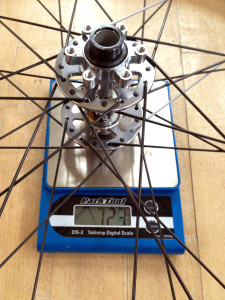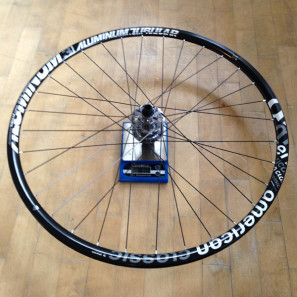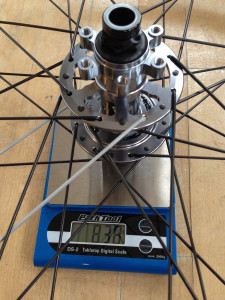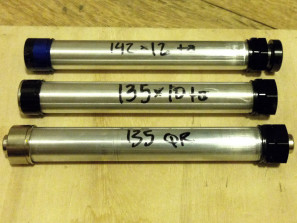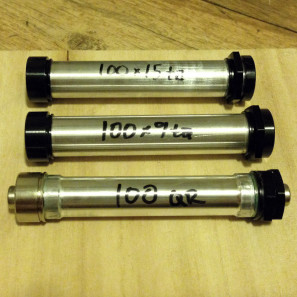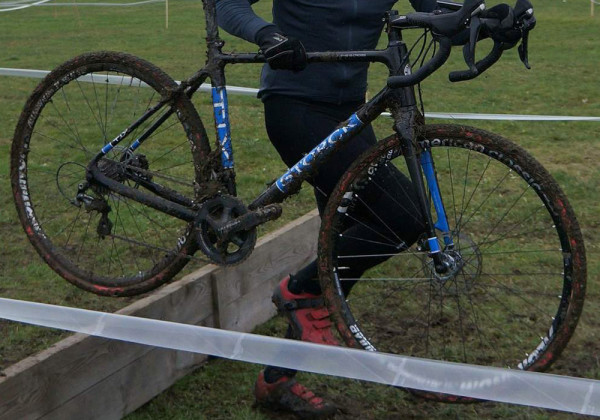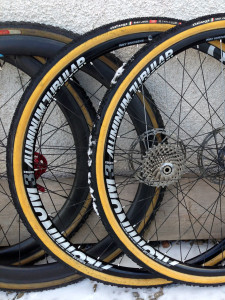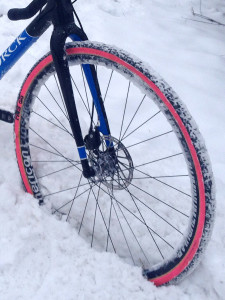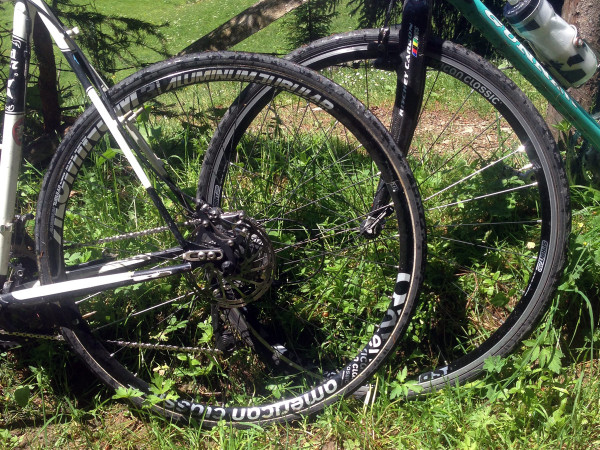Cyclocross season has once again descended upon us here in Europe, and we’ve been out pre-riding our training courses and pre-season races. Some of the first things we think about with #CrossIsComing are tubular wheels and tires. For almost a year we have been cross racing, trail riding, and even climbing Alpine passes with a set of American Classic disc-brake aluminum tubulars. They have turned out to be the tubular wheelset we have trusted the most over the widest range of conditions, be it changing weather or swapping from bike-to-bike. Join us after the break to the low-down on the everyday tubulars that we would be happy to glue up with some new rubber for another season of racing…
Out of our pool of European testers, we’ve been riding lightweight American Classic clinchers for more than a decade. And while the lightweight rims didn’t always seem to like the abuse we put them through, the wheels survived and always felt like a solid bang for our buck. So with that, when we went looking for a set of tubulars for disc brake cross bike testing the American Classic option jumped into mind.
Now over the last 10 months or so we have glued a few different sets of cyclocross tires, a set of fat classics tubulars, and some durable road training tires. In that time the wheels have been cyclocross raced in three countries in the mud and snow, and ridden up gravel mountain passes and classic Alpine road climbs in two more countries, then brought back to the cobbled streets of our base in Prague for all around road riding and even a bit of commuting. They’ve even done their fair share of smooth (and sometimes rocky) singletrack, usually with inappropriate tires, all with just one punctured tubular that got swapped out of the flint-strew mountain road.
Tech Details
The Aluminum Tubular Disc Brake wheelset is built around a claimed 400g rim that measures out to be about 23.5 x 23.5mm for a nice solid platform to glue both light wide road tire or most cross tires. The rims are laced 3-cross with 32 round, butted spokes and external nipples, both front and rear.
The wheelset uses American Classic’s 6-bolt Disc 130 front and Disc 225 rear hubs that get borrowed from their cross country mountain bike wheels. That gives them a lot of flexibility with front QR, as well as both 9mm and 15mm thru-axle compatibility. In the back they work with QR, 10x135mm, and 12x142mm axles. The wheelset we had on test used a Shimano 11speed free hub body, but on the mountain-derived hub, a SRAM XD driver was also available.
They are a great example of a traditional, serviceable wheel build, with a modernized slightly wider, slightly deeper rounded box section rim. We weighed the wheels with the 15×100 and 12×142 thru-axles, as that was the setup for our first test bike (before they got any glue.) They weighed 723+838g for a total wheelset weight of 1561g, or 10g lighter than advertised, which although not ultra-light, still is comparable to most mid-deep section carbon disc-brake tubulars.
The wheelset comes with a set of steel American Classic external cam quick releases, which are reasonably light and have a wide throw, but therefore not much clamping power. We used them a bit, but would actually recommend going for something more secure and reliable on any bike that uses disc brakes and still quick releases.
Review: Racing and Riding
In our time racing the wheels we glued on the cross tires with Mastik 1. To keep us comfortable with the 33mm diameter tubulars, I added a layer of cotton tape in the gluing process to build up the rim bed a bit to mate with the tires. The rims have a wider radius than normal (maybe close to a 27-29mm diameter), but still adding a little cross tape makes for a more secure glue bond with better rim:tire contact. We stuck with the same glue for the spring classics setup, but switched over to Tufo tape for the summer riding on training tubulars. That has since been pulled off and we got to fight with removing a year’s worth of adhesives; a story for another time.
We found no real fault with the wheels throughout our testing. They are a bit heavier than some of the comparable premium carbon tubular wheels we rode in the last year (mostly from the DT Spline range), although with a retail price of $950 they do offer a bit more value. Still, that’s not so cheap, but the wheels have held up.
Part of the weight certainly comes from the large spoke count, while we see a lot of other disc road and cross wheels dropping down to 24 spokes. Looking back on it, the small weight penalty resulted in a very durable and predictably handling wheelset. The same can be said for using the mountain bike hubset. Sure, the hubs are light for the XC crowd, but compared to new light disc road hubs there is extra weight again. The axle flexibility though, was a big benefit as the industry still struggles to settle on one axle standard from year-to-year. It’s probably safe to bet that American Classic will be able to adapt these to what ever standard finally takes hold.
The wide axle size compatibility came in especially handy as one of the bikes we tested last year – the Storck T.I.X. – had an atypical 9x100mm front and 10x135mm rear thru-axle setup. None of our other disc-tubular wheelsets had the easy flexibility to swap back and forth, so the American Classics got a lot of extra race time (a set of DT Spline wheels could be setup with the Storck and pretty much every other axle standard, but couldn’t be so quickly changed from QR to thru-axles and back.) The tiny aluminum threads on the conversion axles were a bit scary at first, and we would advise ham-fisted mechanics to give a little caution, but by the second time we swapped axles, we had it down to less than 10 minutes per wheel.
We’ve done no other maintenance on the wheels, during our test. (We did make sure the axles were clean and greased each time we swapped them.) Not a nipple turned or a bearing repacked. After several trips to the pressure washer (we are reasonably careful; we don’t want wheel bearings to explode on us mid-race) the wheels still spin as freely as new.
The Aluminum Tubular Disc wheels have taken a year of our abuse in stride. They’ve served us well on cobblestone commutes, gravel Alpine passes, and muddy and frozen cyclocross race courses. And as we are checking over our wheels and gluing up new tubulars, we’d have no second thoughts about sticking on some new tires and thrashing them for another season or two.
